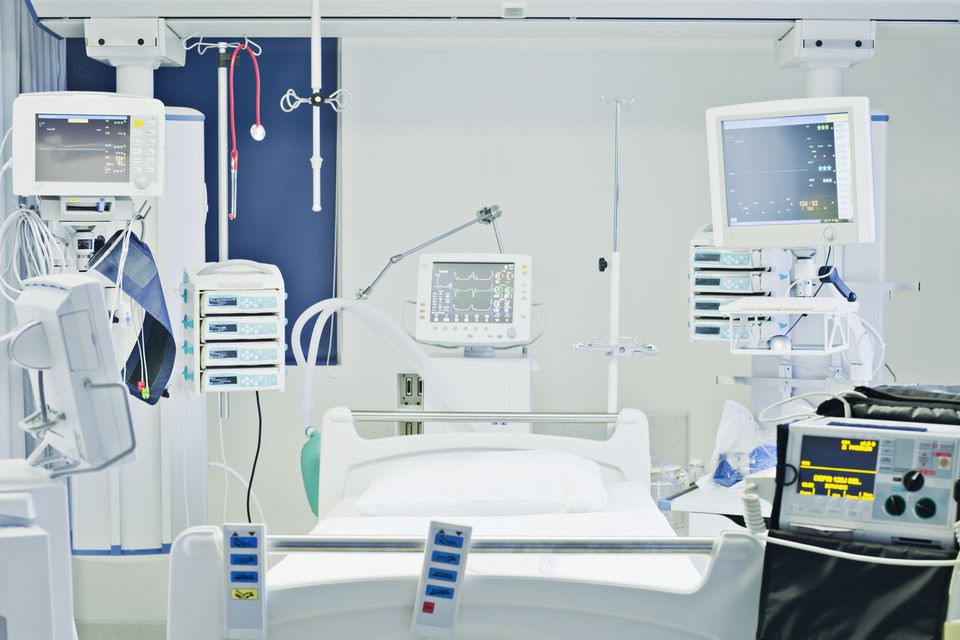Critically ill patients suffering organ failure as a result of not being admitted to ICU fast enough, report warns
Irish hospitals are struggling to find space to properly look after the sickest patients, a new report has found
Some critically ill patients are not being admitted to intensive care units fast enough due to a shortage of beds, causing them to suffer multi-organ failure as a result of the delay, a new report warns.
Other patients are facing unplanned discharges from intensive care in the middle of the night before they are ready because somebody more urgent needs to be admitted.
The insight into how hospitals are struggling to find space to properly look after the sickest patients has emerged in the Irish National Intensive Care Unit annual report for 2022 from the National Office of Clinical Audit.
It found patients in Ireland are sicker by the time they get to intensive care compared to the UK; the average illness severity score was 16 in Ireland versus 14.5 in the UK.
It shows that the average number of intensive care and high dependency unit beds open daily in publicly funded hospitals in 2022 – when the impact of Covid was still significant – was 289, corresponding to 5.6 critical care beds per 100,000 population.
This is low compared to international standards, with the UK having 7.3 and the OECD average being around 12 beds per 100,000 population.
Nationally, 9pc of patients admitted from a ward developed multi-organ failure within 24 hours of intensive care admission, higher than the 6pc in the UK.
“This indicates delays in intensive care admissions, likely due to bed shortages, highlighting the need for more timely intervention for critically ill patients,” said the report.
Beaumont Hospital, the Mater Hospital, St Vincent’s Hospital, Cork University Hospital and Tipperary Hospital all fell short of acceptable limits in this metric.
Patients who develop multi-organ failure are at higher risk and face a lengthy stay in intensive care, as well as possibly a long-term impact on their health.
While 85pc of patients were placed in intensive care within four hours of the decision to admit, only 30pc were there within one hour, although the target is 50pc.
A lack of beds back on hospital general wards meant that 27pc of patients spent more than 24 hours in intensive care after being cleared for discharge, up from 20pc in 2021 and 6pc of bed days were occupied by patients no longer needing to be there. Some patients who would be treated in intensive care in the UK are cared for in wards here.
The report said, however, that despite the pressures, the national death rate for intensive care patients is, as expected, at 24pc, taking into account factors such as how ill the patients were.
It said that 76pc of patients admitted to intensive care survived to leave the acute hospital alive.
The report which looked at 11,008 admissions of 10,423 patients to 26 units in 22 hospitals found that the average bed occupancy rate nationally was 92pc, but in many of the larger units it was over 95pc.
“These high occupancy levels lead to periods when intensive care beds are all occupied and not available for urgent admissions,” said the report.
One third of patients were admitted from the emergency department, 20pc from another ward, 10pc from another hospital and 16pc after surgery.
Common reasons for illnesses were sepsis, respiratory failure, accidents, cardiac arrest and having had surgery. Patients admitted with Covid had longer stays and made up 6pc of all admissions and they occupied 12pc of all bed days.
Among intensive care patients in 2022, there were 144 who were pregnant or recently pregnant, some of whom has caught Covid.
There was evidence of patients with sepsis not being diagnosed early enough in Beaumont Hospital, Cork University Hospital, Tallaght Hospital and Tipperary Hospital.
The report noted a 28pc increase in critical care beds since March 2020 as a significant achievement.
A national policy to keep one staffed intensive care bed empty for immediate admissions is crucial to ensure critically ill patients can access beds without delay. Adequate staffing levels are also essential.
Prof Rory Dwyer, clinical lead of the Irish national intensive care unit audit said: “The report highlights both our achievements and the areas requiring attention in intensive care. It is clear that while the quality of care remains high, the pressure on our intensive care resources is significant. Expanding capacity and ensuring timely admissions and discharges are critical to improving patient outcomes.”
In response the HSE said investment of €77m in 2021 and 2022 increased the number of critical care beds from 258 in March 2020 to 329 at the end of December 2023. In 2024, a further 22 additional critical care beds are planned and on delivery, will increase the total number of funded critical care beds to 352 by the end of the year, said a spokeswoman.
Join the Irish Independent WhatsApp channel
Stay up to date with all the latest news










